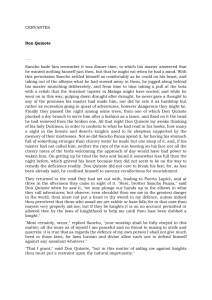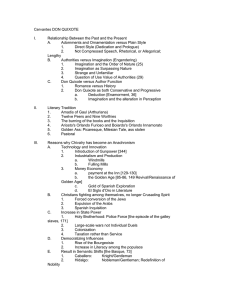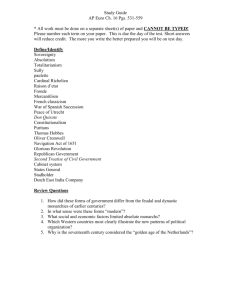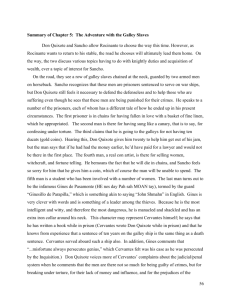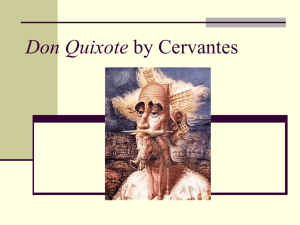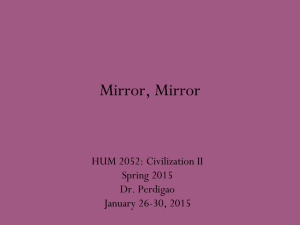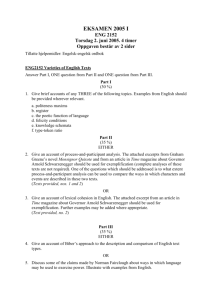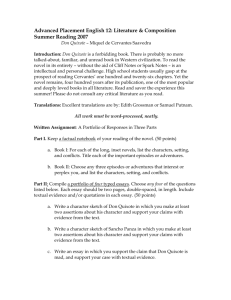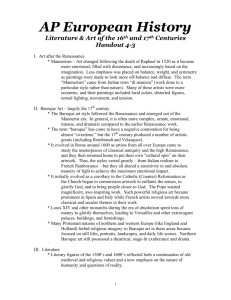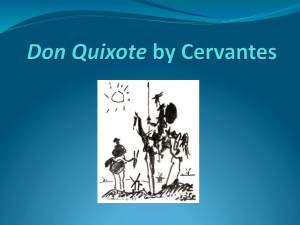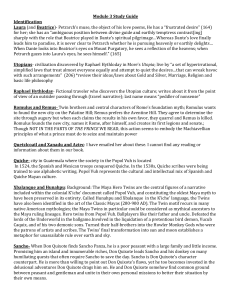Don Quixote vs Sancho Panza
advertisement
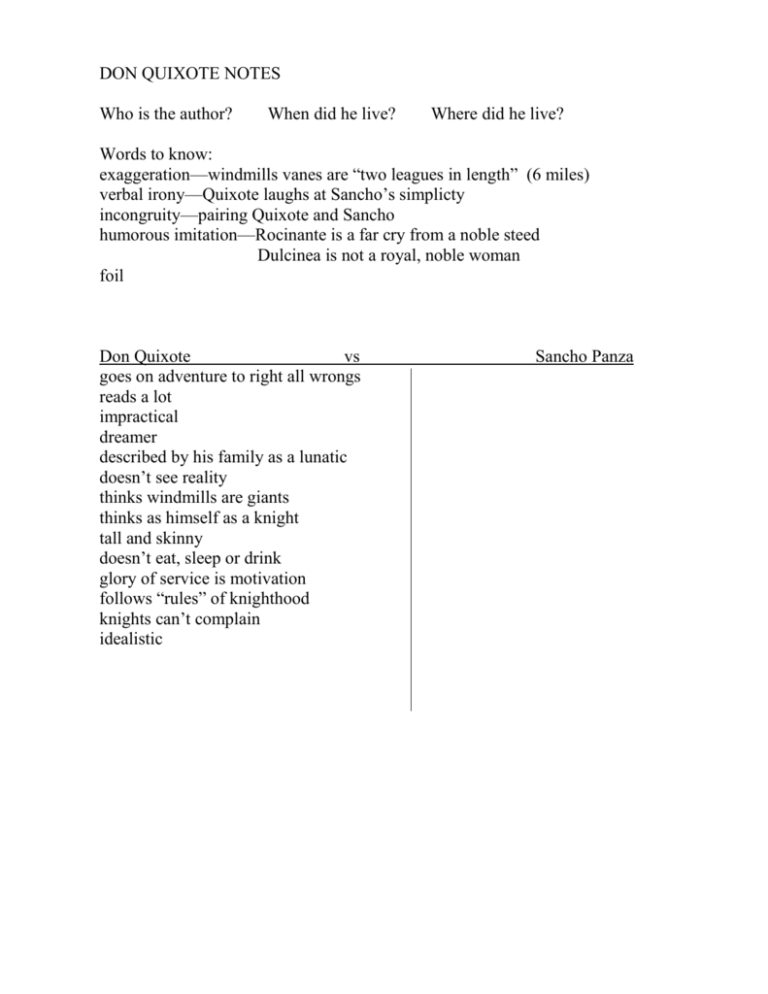
DON QUIXOTE NOTES Who is the author? When did he live? Where did he live? Words to know: exaggeration—windmills vanes are “two leagues in length” (6 miles) verbal irony—Quixote laughs at Sancho’s simplicty incongruity—pairing Quixote and Sancho humorous imitation—Rocinante is a far cry from a noble steed Dulcinea is not a royal, noble woman foil Don Quixote vs goes on adventure to right all wrongs reads a lot impractical dreamer described by his family as a lunatic doesn’t see reality thinks windmills are giants thinks as himself as a knight tall and skinny doesn’t eat, sleep or drink glory of service is motivation follows “rules” of knighthood knights can’t complain idealistic Sancho Panza Name ___________________________ DON QUIXOTE by Cervantes Who is the author and what years did he live? (p. 473) What country is he from? What are the main purposes of a parody? (p. 474) What objects does Don Quixote perceive as giants? When Don Quixote’s sword breaks, what does he use for its replacement? What is the outcome of Don Quixote’s assault on the windmills? How do Don Quixote and Sancho Panza pass the night after the encounter with the windmills? What does “foil” mean? How is the word “foil” describing characters seen in this story? Use a t-graph to explain. __________________________________________________________ 1. 2. 3. 4. Vocabulary: Write a 7+ word sentence using the words from the story: Succor (p. 474) Enmity Victuals Vigil Flaccid Disposition Quixotic (what does this word mean?) Techniques used in parodies exaggeration Details from Don Quixote Incongruity (deliberately pairing things that don’t belong together) Verbal irony (saying one thing but meaning another) Humorous imitation (in this case, chivalry and knights) EXTRA CREDIT: Draw, sketch, paint, etc. a picture representing Don Quixote and/or Sancho Panza.
